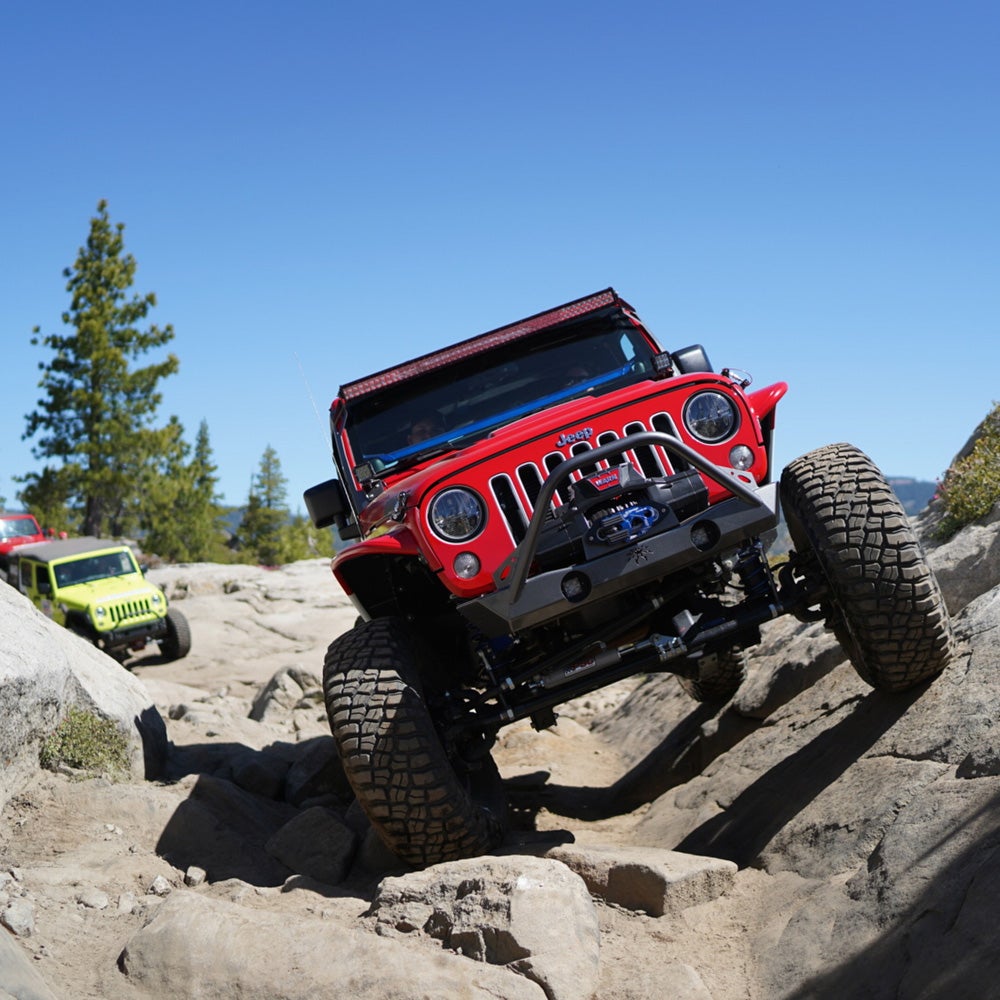Northern California’s —one of the most iconic and difficult off-road routes in the world—makes a typical driver totally pucker. But John Williams is not your typical driver. The instructor and owner of the Utah-based build shop is an expert at picking the safest, most efficient way through the giant boulders and off-kilter terrain one comes across on the stunning road that meanders through the Sierra Nevada outside Lake Tahoe.
“Once you get good at reading a line, it becomes second nature,” Williams says. “But it definitely takes a lot of practice and comes through experience.” That last bit is key: What follows isn’t something for the novice overlander to try right out the gate with a brand-new Jeep. Successfully navigating this kind of terrain takes years of practice, and if you really want to go full bore into the off-road world, you’re best off taking a professional class first.
But before you sign up for one, here are some helpful guidelines from Williams to keep in mind. Here’s how he navigates the roughest roads on the planet.
#1. Inspect the Vehicle
Before tackling technical terrain, Williams always walks around the vehicle to look for markers on the hood that can help him properly position his tires. For example, the hood latches on a Jeep usually line up with the inside of the front tires. Knowing this, Williams can use the latches as a guide to help him place his tires exactly where he wants them. On the Jeep he just built (pictured above), the driver’s side windshield fluid dispenser lines up with his front differential, which he wants to keep far away from rocks.
#2. Pick the Line with the Most Traction
Williams always seeks out the line that will give his tires the most traction—even if it doesn’t look like the easiest route. The key here is maximizing surface area. Check out the photo above, for example. An inexperienced driver might chose to keep his car as low as possible, keeping all four tires on the even, though chunky, middle path. Williams chose instead to tilt his Jeep up on the slab to the right. He knew the rock under the driver’s side wheels would offer a smooth contact patch and thus lots of grip. He also knew that if he kept the Jeep fairly low on that rock, he wouldn’t risk tipping over.
#3. Look Ahead
Like a mountain biker, Williams is always scanning ahead, even when he’s in the middle of a tricky section. That’s because if he clears one boulder field, he still needs to set up properly so he can get over the next one (and the next and the next). “At this point, after lots of experience, I’m able to drive a section and also simultaneously start to memorize what’s up ahead so I can be as fluid and prepared as possible,” Williams says.
#4. Embrace Left-Foot Braking
This is a tricky technique to master, but Williams uses it often in technical terrain. In his Jeep, which has an automatic transmission, Williams will roll up to a tricky line with his right foot on the gas and his left foot on the brake. By lightly pressing the brake as he gives the Jeep a little bit of gas, he forces the nose of the car down, putting pressure on the front tires and increasing his traction. Slight pressure on brake also ensures Williams doesn’t come rocketing off an obstacle if he gives the Jeep a bit more gas.
#5. Recruit a Spotter
In technical sections, get someone outside the vehicle to help guide you. The spotter can see your entire vehicle and all four tires, and then give you precise directions on how to line everything up and tell you if any rocks have shifted as you’ve moved forward. When Williams works with a spotter, he makes sure the person knows the trail well, understands his vehicle, and communicates clearly.
#6. Practice on Easy Roads and Go Slow
Ultimately, Williams tells people to practice a lot, constantly work on getting a feel for their vehicle, start on significantly less technical lines, and take it ludicrously slow at first. There are no points in recreational driving for taking a line fast, just satisfaction in reading the line correctly. “I always tell people I’m teaching that you have to learn how to go fast at one mile per hour before you can learn to go slow at two miles per hour,” he says.


